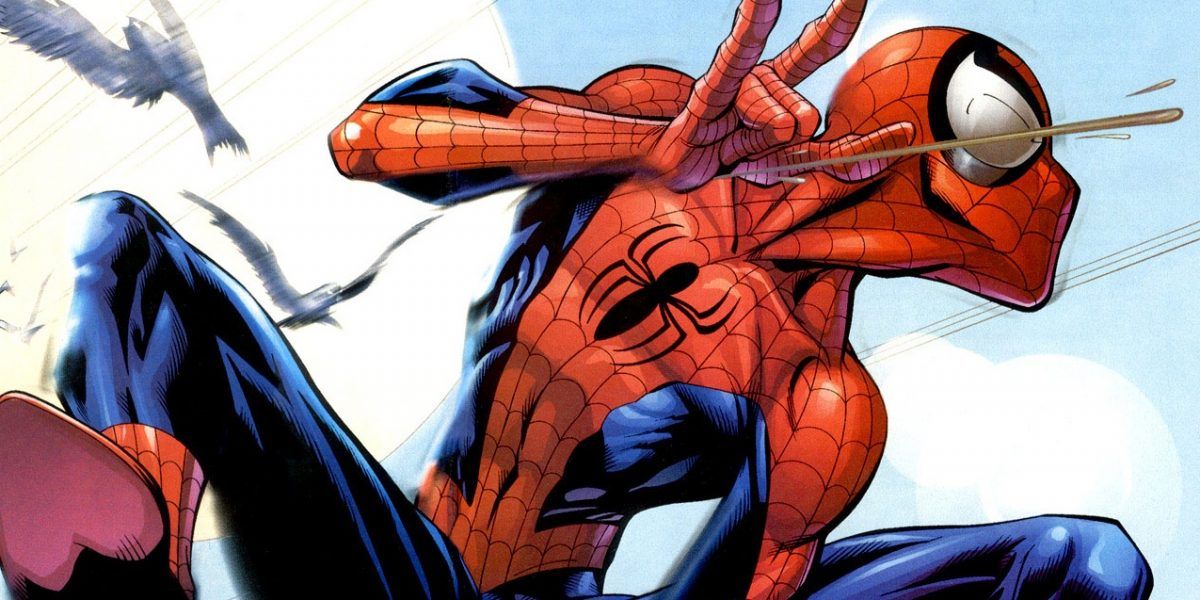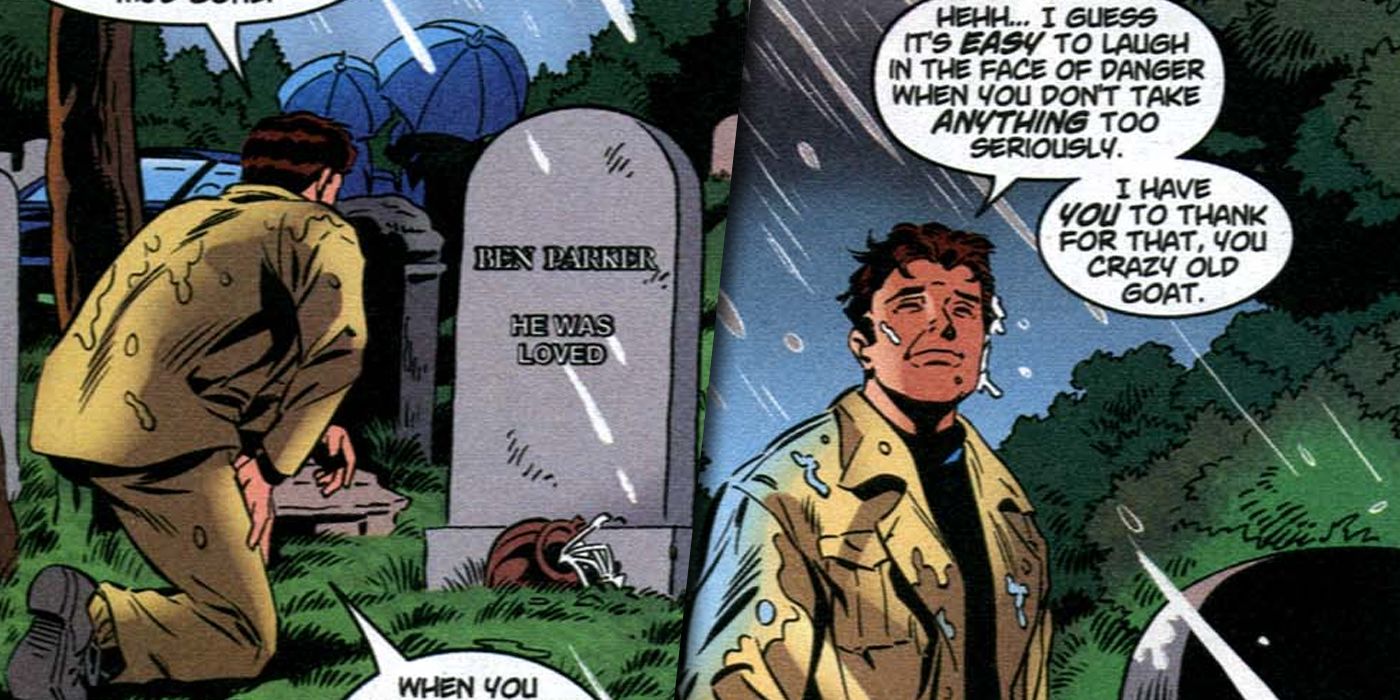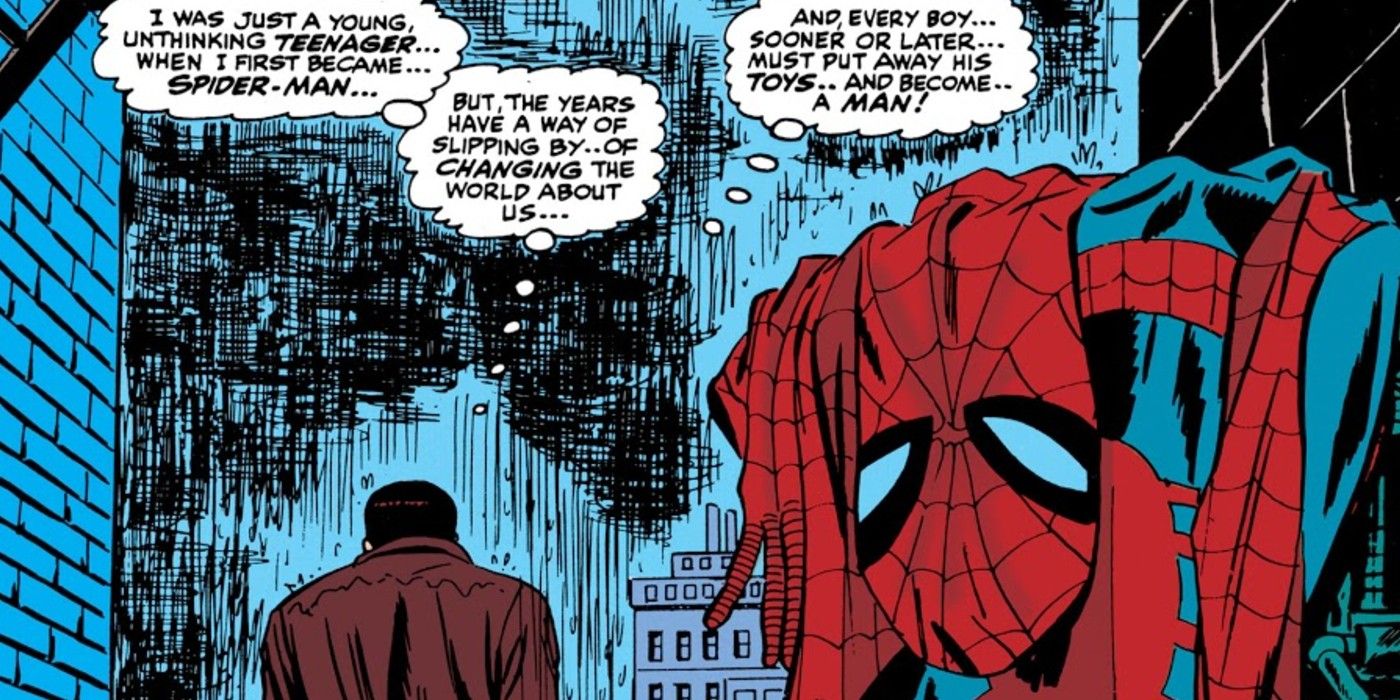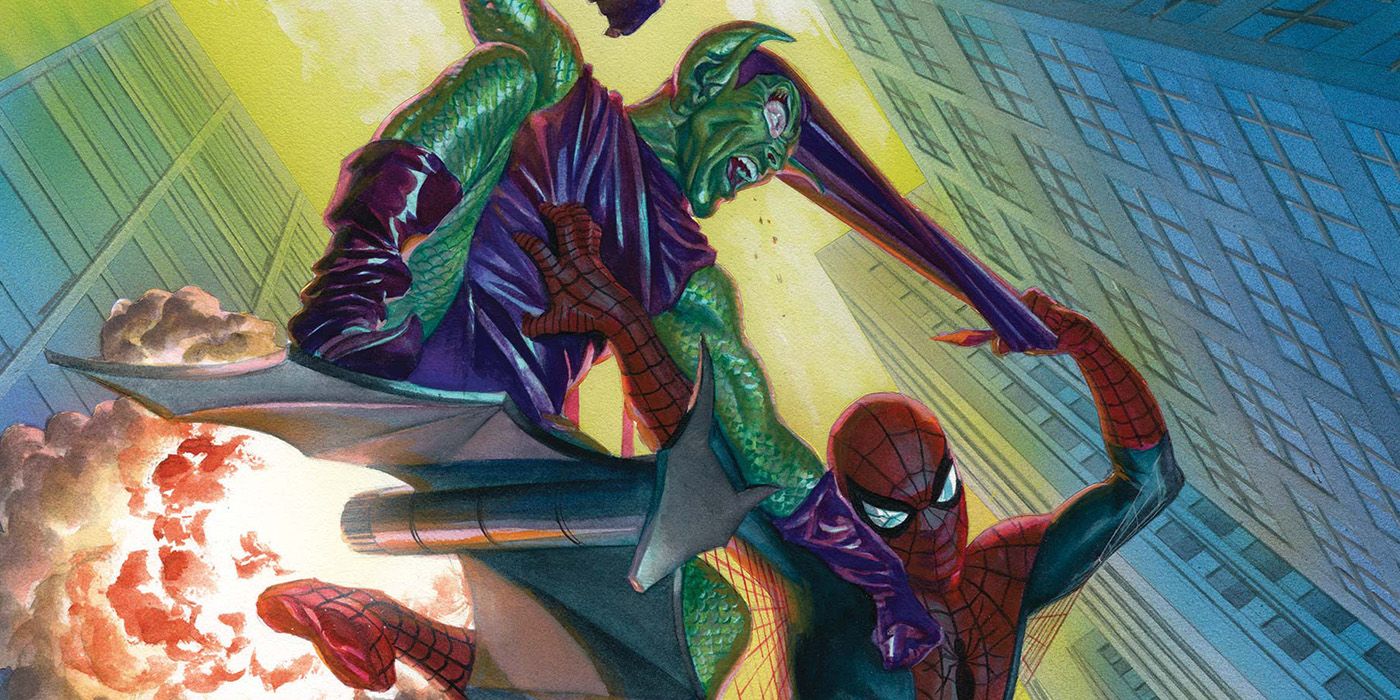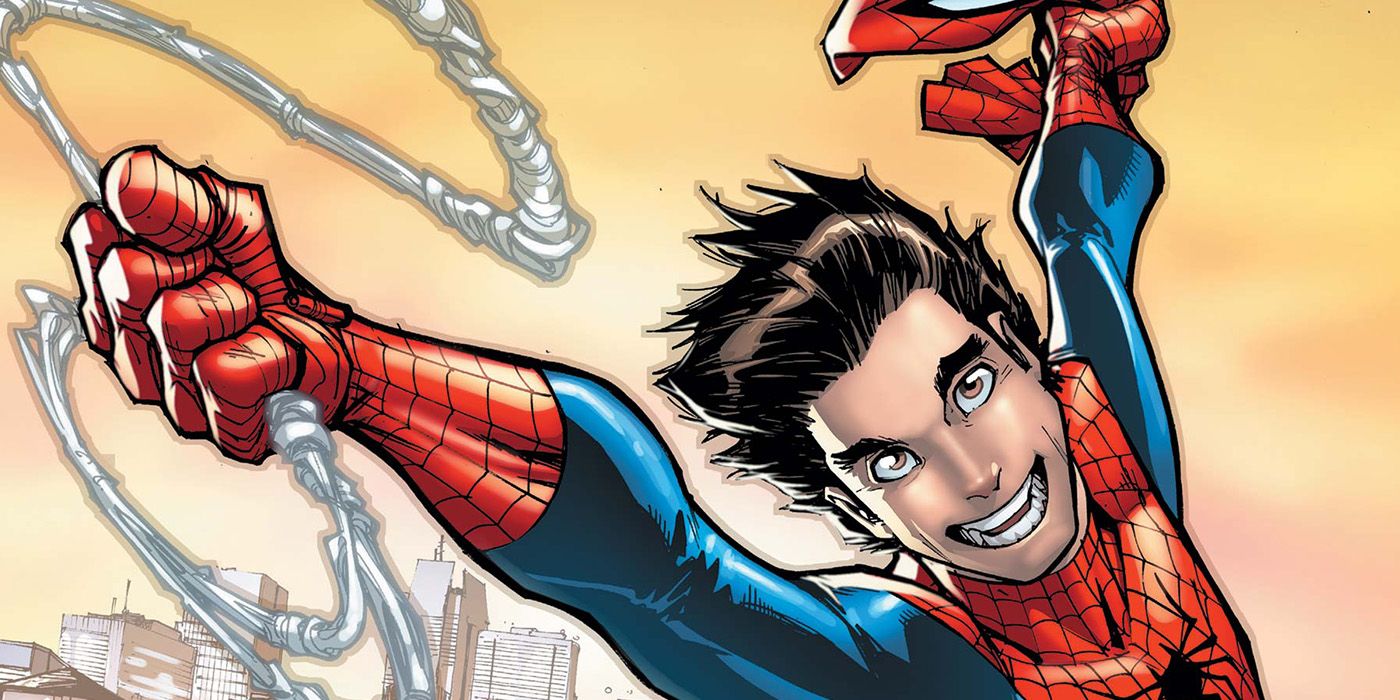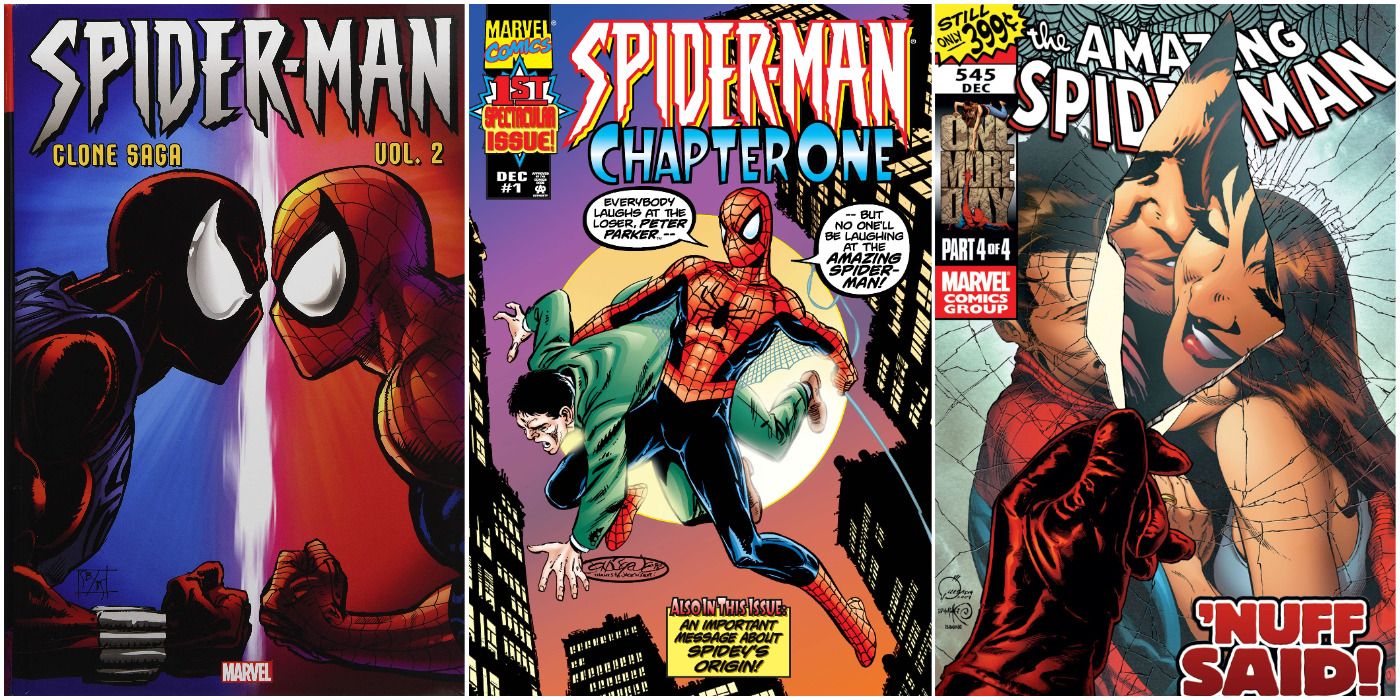Spider-Man is Marvel’s most popular character and has been for years. Marvel’s Silver Age successes were great, but The Amazing Spider-Man was the game-changer, the comic that really made the publisher a force in the industry. Since then, Spider-Man comics have become one of the measuring sticks that the entire comic industry is measured by; its sales are critical to the health and well-being of Marvel.
The success of the Spider-Man comics has hinged on a lot of factors, but one thing that has been crucial is their uniqueness. In the sixty years since Spider-Man’s debut, his comics have given readers things that no other comic can match.
8 Ultimate Spider-Man Is The Most Successful Hard Reboot Of All Time
Ultimate Spider-Man made a massive splash when it debuted in the year 2000. Written by soon to be superstar Brian Michael Bendis with art by Spider-Man artist extraordinaire Mark Bagley, it was not only the first book in the developing Ultimate line — one of the keys to Marvel’s creative rejuvenation in the ’00s — but also a complete hard reboot of the character unlike anything ever done before. Even the many continuity reboots of Marvel’s distinguished competition kept events from the older iterations, but Ultimate Spider-Man was completely new.
It set a new precedent and created an entirely new continuity, one that borrowed characters and Spider-Man’s origin from the original universe but cast everything else in new ways. It’s held up better than any other Ultimate book. It’s a classic of the medium, proving that a complete reboot of a property can be successful.
7 Peter Parker’s Trials Have Resonated With Readers In Ways That No Other Character’s Have
One of the selling points of early Spider-Man comics was that he was not only of a similar age to many readers, but he was relatable. He was a teenager with money problems, he couldn’t get a girl, and he was often mocked for his bookish tendencies. Readers could look at Peter Parker and see themselves in a way they couldn’t with any other character on the market, Marvel or DC. Since then, Peter Parker’s trials and tribulations have been a key part of the character and have been kept as realistic as possible.
From job woes to his many relationships and their problems to worrying about his elderly aunt to his mental health issues, Peter Parker has always resonated with readers in a way no other character has. He isn’t rich or lucky or stable, and he screws up all the time. Readers can see themselves in Spider-Man.
6 It Was Stan Lee’s Best Book
Stan Lee is a legend in the comic industry, having helped create all of Marvel’s major Silver Age heroes and villains. He’s one of Marvel’s longest-tenured writers, and he changed comics for years. He co-created Spider-Man with artist Steve Ditko and wrote Amazing Spider-Man for a hundred and five issues, occasionally returning over the years as co-writer, as well as for back-ups and epilogues. In the years to come, he helped define Spider-Man’s voice and personality, his conception of the character being Spider-Man’s guiding light.
Lee wrote a lot of comics, and his two biggest are widely considered to be ASM and Fantastic Four. However, FF always felt more like artist/co-plotter Jack Kirby’s work than Lee’s; Amazing Spider-Man was Lee at his finest, telling personal superhero stories that combined humor and pathos expertly.
5 He Has The Best Villains Of Any Solo Marvel Hero
Marvel is known for having some great villains but not every solo hero’s rogues gallery is created equal. Oftentimes, there are a few standouts and then a lot of duds, to be frank. Spider-Man doesn’t have that problem. There are few other solo heroes in comics with as many A-list villains as he has, and no other Marvel hero comes close. On top of that, even his lesser villains are visually distinct and fun to read about, with characters like Rocket Racer, the Spot, and the White Rabbit still starring in great stories.
It’s rare for a hero to have as many amazing villains as Spider-Man has. He’s had some spectacular battles with them as they enmeshed him in the web of their evil schemes. It’s made his books exciting to read for decades.
4 Spider-Man And Green Goblin’s Rivalry Is The Best In Comics
Spider-Man has several villains that can be considered his arch-nemesis, but one always stands above the others: the Green Goblin. Their rivalry is legendary, and they’ve battled each other many times over the years. No other villain has done the damage to Spider-Man that Green Goblin has; his repeated victimization of Gwen Stacy, Aunt May, and Peter himself have made him an icon when it comes to comic villains.
Superhero comics are known for their fierce rivalries, but Spider-Man and Green Goblin’s is next level compared to any other. It’s personal in a way that no other rivalry in comics is and has given readers moments like no other comic has, for better and for worse.
3 He Has So Many Perfect Gateway Comics
Comics can be notoriously hard to get into for new fans. A young person could go watch an MCU movie, become daunted by the sheer amount of choices of where to start, and run away, usually to the simpler waters of manga where it’s easy to find a start and endpoint. This has been a big problem for modern Western comics, but it’s one that Spider-Man has been able to sidestep rather well. One of the great things about Spider-Man is that he’s a rather timeless character, and there are multiple stories anyone can pick up with no prior knowledge of the character.
Spider-Man is the safest character for casual readers. There definitely are some convoluted periods in Spider-Man history. However, there are many more great Spider-Man stories that hold to a framework that someone who has only consumed Spider-Man media outside of comics could understand and enjoy.
2 Miles Morales Gives Readers A Second Spider-Man That’s Just As Good As The Original
Spider-Man has been through many permutations over the years. There is a literal multiverse of Spider-Men and women out there, but the most popular besides Peter is Miles Morales. Taking the place of Ultimate Peter Parker after he died, Miles kept up Spider-Man’s place as the most popular Ultimate Universe character. After 2015’s Secret Wars, Miles was folded into the 616 universe and has been there ever since, helming his own solo book and joining some of Marvel’s biggest teams.
It’s rare for there to be a second version of a character that rivals the first in popularity, but that’s the case with the two Spider-Men. Miles has starred in movies and video games while his solo comic has survived alongside Peter’s ever since his debut. Legacy replacements are all the rage in comics nowadays, but Peter and Miles are the only two that have existed concurrently so long and successfully.
1 His Books Survive Fan Ire Better Than Any Other
The last thirty years of Spider-Man comics have been quite interesting. The ’90s weren’t a great time for most of Marvel, and Spider-Man suffered through the Clone Saga, a story that started out popular but cooled off tremendously as the years without an ending stretched on. After that, Marvel would try a soft reboot centered around writer/artist John Byrne’s Spider-Man: Chapter One that crashed and burned immediately.
The ’00s would bring writer J. Michael Starczynski’s classic run on Amazing Spider-Man and Bendis and Bagley’s Ultimate Spider-Man, but would also lead to One More Day, one of the most hated Marvel stories ever. Since then, fan ire with the Spider-Man books has burned very hot, yet they stick around no matter what. No other comic character would be able to survive what Spider-Man has in the last thirty years.
Read Next
About The Author
